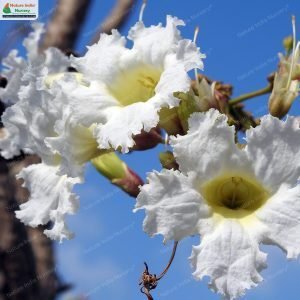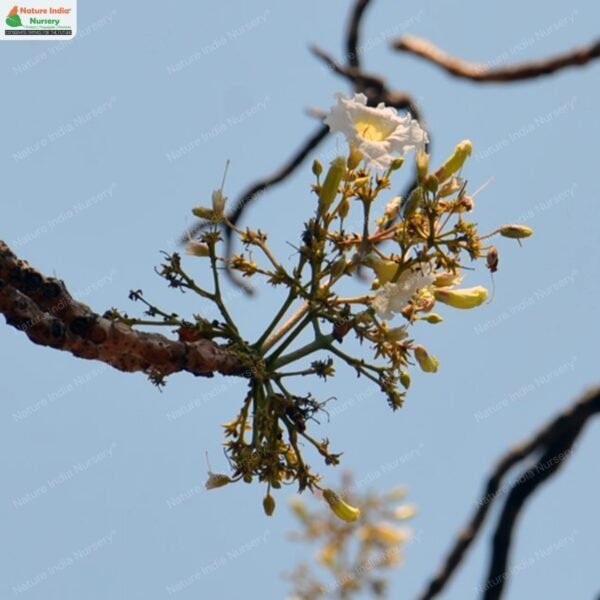Radermachera xylocarpa, commonly known as the Padri Tree, is a large deciduous tree that can grow up to 30 meters tall with a straight, cylindrical trunk. The tree produces large, bell-shaped, white to pale yellow flowers that are fragrant and appear in clusters. The fruit is a long, cylindrical woody capsule that splits open when mature to release numerous winged seeds. Native to India, the tree is commonly found in seasonally dry tropical forests, thriving in well-drained soils and often seen in mixed deciduous forests and along riverbanks.
The Padri Tree’s ecological significance extends beyond its physical characteristics, as it provides a valuable food source for various wildlife species, including pollinators. Its flowers attract pollinators like bees and butterflies, while its seeds are dispersed by wind, aiding in the propagation of the species.
Habitat
Radermachera xylocarpa is native to India, commonly found in seasonally dry tropical forests, and often seen in mixed deciduous forests and along riverbanks.
Planting and Care
-
Propagation: The tree can be propagated by seeds, which germinate within a few weeks under optimal conditions.
-
Soil: Prefers well-drained, fertile soil.
-
Watering: Requires regular watering, especially during dry periods.
-
Sunlight: Thrives in full sun.
Additional Information
-
Economic Value: The tree contains steroidal compounds like stigmasterol and sitosterol, which have potential medicinal applications.
-
Ornamental Value: Often planted in parks and large gardens for its ornamental appeal. Used in landscaping for its large size and attractive flowers.
-
Wildlife Significance: Flowers attract pollinators like bees and butterflies. Seeds are dispersed by wind, aiding in the propagation of the species.





